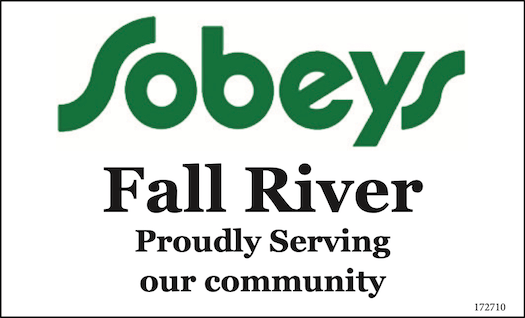Federal government press release
SHUBENACADIE: The former Shubenacadie Indian Residential School is one of two in Canada that received national historic site designation from the federal government.
In a press release, the federal government said that Residential School System is a tragedy born from colonial policies in Canada’s history. It is one that has had negative effects on generations of Indigenous peoples with enduring impacts on First Nation, Inuit and Métis communities, cultures, economies, traditional knowledge and ways of life, languages, family structures, and connections to the land.
The Government of Canada is acknowledging the past and, with Indigenous peoples and communities, is committed to sharing the experiences of Indigenous children in these schools to ensure that this history is never forgotten.
Minister of Environment and Climate Change and Minister responsible for Parks Canada, Jonathan Wilkinson, recognized the national historic significance of the Residential School System as a tragic and defining event in Canadian history. Also announced today is the designation of two former residential school sites as national historic sites:
· The former Portage La Prairie Indian Residential School in Manitoba; and
· The former Shubenacadie Indian Residential School in Nova Scotia.
The former Shubenacadie Indian Residential School site is located in the Sipekni’katik district of Mi’kma’ki overlooking the village of Shubenacadie, Nova Scotia. The site was nominated by the co-chair of the Mi’kmaq-Nova Scotia-Canada Tripartite Forum on behalf of Survivors of the Shubenacadie Indian Residential School and their descendants. Mi’kmaw and Wolastoqkew children from Nova Scotia, Prince Edward Island, New Brunswick, and Quebec attended Shubenacadie Indian Residential School.
It is also possible that children from other Indigenous communities attended this school. Parks Canada worked with the nominator as part of a collaborative process to highlight the experiences of survivors and determine the historic values of the site.
The experiences of former students and survivors of the Portage La Prairie and Shubenacadie residential schools and other residential schools across Canada have affected members of First Nations, Inuit and Métis communities for generations.
Various forms of residential schools for Indigenous children existed in Canada from the 17th century until the late 1990s. During the 19th and 20th centuries, a formal system for the residential schooling of Indigenous children was established and expanded throughout Canada. Concerted federal government involvement in Residential Schools began in the 1880s. These later residential schools were administered and funded by the federal government and largely operated by certain churches and religious organizations and, in time, existed in almost every province and territory in Canada. It is estimated that at least 150,000 First Nation, Inuit, and Métis children attended federally-run residential schools in Canada. The last residential school was closed in the late 1990s.
This system was imposed on Indigenous peoples as part of a deliberate effort to assimilate them and destroy their cultures and identities. Many Indigenous children were forcibly removed from their homes and communities to attend residential schools. While there, children often faced sub-standard conditions, harsh discipline, neglect, abuse, and the deliberate suppression of their languages and cultures. The fates of numerous First Nation, Inuit and Métis children taken away remain unknown, their graves unmarked.
Residential schools have had devastating long-term impacts on Survivors, their families, and communities. The efforts of former students to tell their stories and seek justice have resulted in the Indian Residential Schools Settlement Agreement and apologies by the federal government.
The National Centre for Truth and Reconciliation nominated the Residential School System for consideration as a national historic event and its designation reflects the input and recommendations from Survivors across the country. This designation is an important part of the Government of Canada’s response to Call to Action 79 of the Final Report of the Truth and Reconciliation Commission, which called for national commemorationof residential school sites and the history and legacy of residential schools.
The former Portage La Prairie Indian Residential School site is located on Keeshkeemaquah Reserve, part of the reserve lands of Long Plain First Nation in Manitoba. This site was nominated for designation by the Long Plain First Nation. Children who were sent to the former Portage La Prairie Indian Residential School came from many First Nations and other Indigenous communities within Manitoba and elsewhere. Parks Canada worked collaboratively with the First Nation to tell the stories of survivors and determine the historic values of the site.
National historic designations commemorate all aspects of Canadian history, both positive and negative. While some designations recall moments of greatness and triumph, others encourage contemplation of the tragic, complex and challenging moments that define the Canada of today. By sharing these stories with Canadians, the Government of Canada hopes to foster better understanding and open discussions on the cultures and realities of the history of Canada.
Quotes
“This designation today has been the result of many years of hard work. This site will always represent a horrific past for Survivors and their families. Many Survivors and community members have since joined in the effort to preserve the building and their stories because this is also a story of resilience and a long journey towards healing. Today marks a milestone for Long Plain First Nation and a hopeful commitment that we can work in partnership to do better for our children and communities.”
Chief Dennis Meeches
Long Plain First Nation
“As nominee and co-chair of the Tripartite Culture and Heritage Working Committee, I am grateful for this designation. Between 1930-1967, over 1000 Mi’kmaw and Wolastoqiyik students attended the Shubenacadie Indian Residential School, including my father and uncles. Although the building is no longer standing, our Survivors have prioritized a National Historic Site designation, and we, as a community, will have the opportunity to continue our journey of healing. This site will stand as a testament to the impact of the experiences of our Survivors, their families and communities, and will preserve a part of Canadian history that should never be forgotten.”
Tim Bernard
Executive Director, Mi’kmawey Debert Cultural Centre and Co-chair of the Tripartite Culture and Heritage Working Committee
“This announcement marks a major turning point in our collective duty to remember. Justice for residential school Survivors, inter-generational Survivors and all those affected by this tragic element of Canadian history, requires that the truth must never be forgotten. Today we honour the courage, strength, and resilience of Survivors and their families who have shared their truths. For years, the history of residential schools in Canada has been excluded from education curricula and completely unknown by many Canadians. The National Centre for Truth and Reconciliation asks all Canadians to join in this quest to ensure that the truth is never forgotten.”
Ry Moran
Director of the National Centre for Truth and Reconciliation
“In order for us to build a more equal and just country, we must acknowledge and understand our shared past. This includes facing the difficult periods and actions that exist, including the wrongs perpetrated against Indigenous peoples, and the ongoing intergenerational trauma that has followed. Today’s designation recognizes the national historic significance of the Residential School System as a shameful period in Canada’s history. National historic designations commemorate all aspects of Canada’s history and prompt us to acknowledge the tragic moments of our shared history that define Canada today. By sharing these stories with Canadians, we hope to foster better understanding of our shared history as we walk the path of reconciliation together.”
The Honourable Jonathan Wilkinson
Minister of Environment and Climate Change and Minister responsible for Parks Canada
“The Residential School System is a tragedy born of colonial policies that harmed children, their families and their communities. Today’s designations are another step towards the healing of survivors and communities and helps all Canadians recognize the intergenerational trauma still impacting generations of children and grandchildren of those that attended the Residential schools. This announcement comes at a time when people are standing up against systemic racism, injustice and violence. This is a time for all Canadians to read the Calls to Action of the Truth and Reconciliation Commission. This is a time for us all to determine what role we will play in promoting a better understanding of the past so that we can make the changes necessary to build a better future together.”
The Honourable Carolyn Bennett, M.D., P.C., M.P.
Minister of Crown-Indigenous Relations
Quick facts
- Indigenous Peoples have made concerted efforts to bring public attention to the neglect and abuse prevalent at residential schools, efforts that led to the settlement of The Indian Residential Schools Settlement Agreement, federal government’s official apologies to former students of residential schools in 2008 and 2017, and the Truth and Reconciliation Commission, which ran from 2008 to 2015.
- These designations are an important part of the Government of Canada’s response to Call to Action 79 of the Final Report of the Truth and Reconciliation Commission, which called for national commemoration of residential school sites and the history and legacy of residential schools. For more information on the Calls to Action please visit:
http://trc.ca/assets/pdf/Calls_to_Action_English2.pdf - Parks Canada is working with Indigenous peoples to incorporate Indigenous views, histories, and heritage into national parks and historic sites. This is part of the Government’s commitment to implement the Calls to Action of the Truth and Reconciliation Commission of Canada.
- Through the implementation of the Framework for History and Commemoration and continued collaboration with Indigenous communities, heritage organizations, partners, and Canadians, Parks Canada will ensure that the stories shared at national heritage places explore all facets of our country’s heritage, and will give Canadians a better understanding of our shared history.
- To date, based on recommendations from the Historic Sites and Monuments Board of Canada, the Government of Canada has designated over 2,150 national historic sites, events, and persons. Each of these designations contributes its own unique story to the greater history of Canada, and helps us better understand our country and our identity. Visit the Parks Canada website for more information:
https://www.pc.gc.ca/en/culture/clmhc-hsmbc/ncp-pcn/application - Error, group does not exist! Check your syntax! (ID: 9)





































